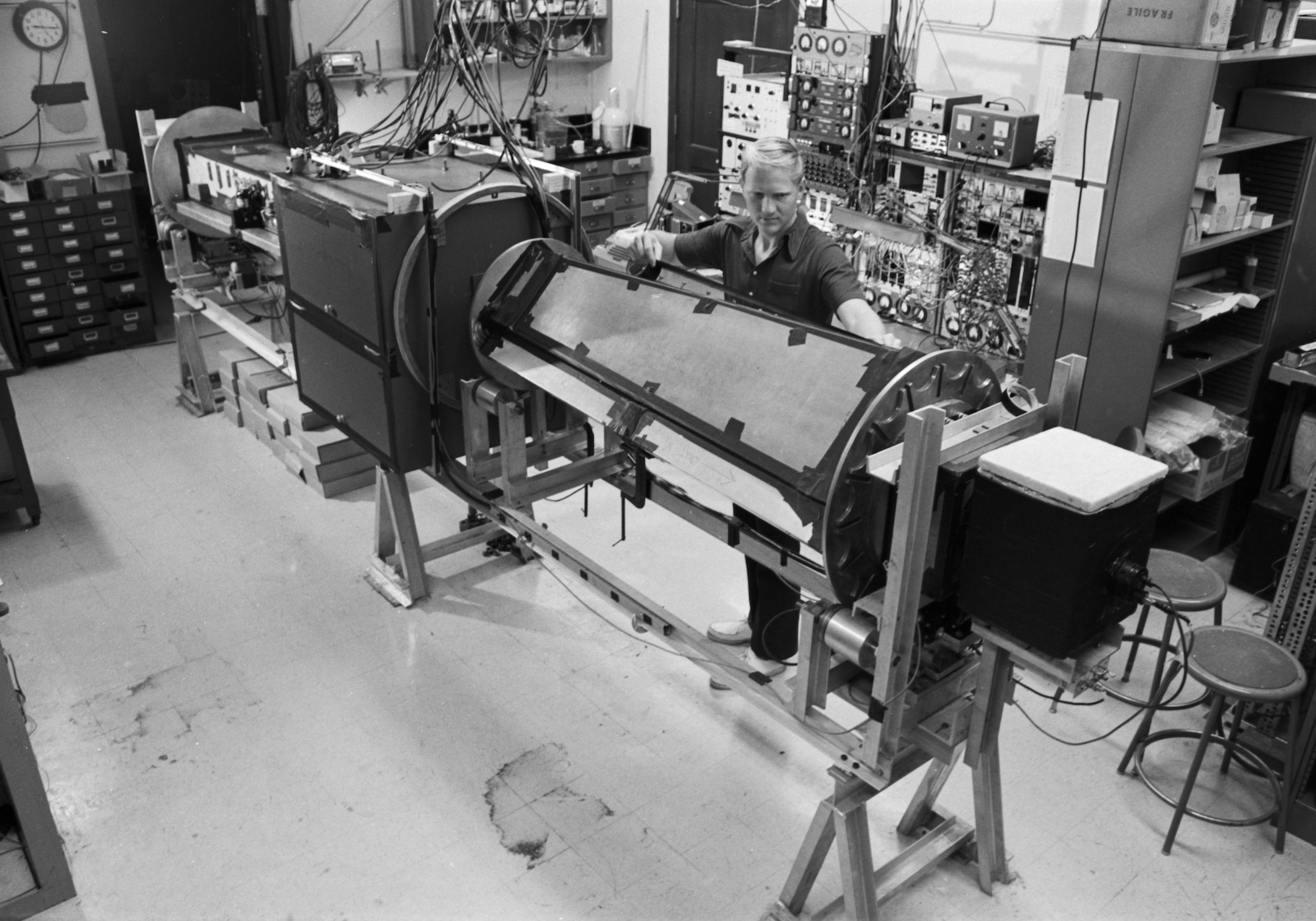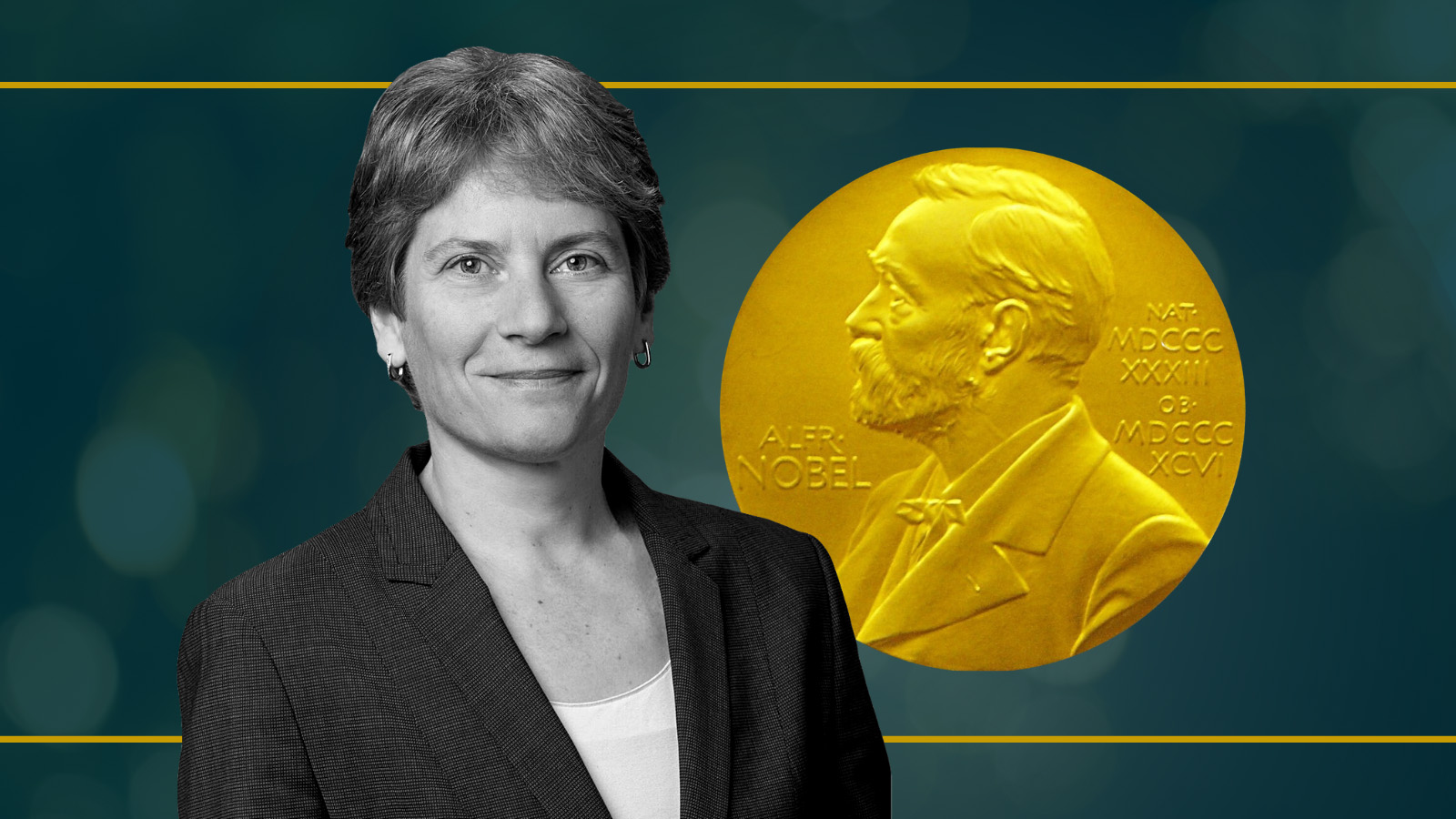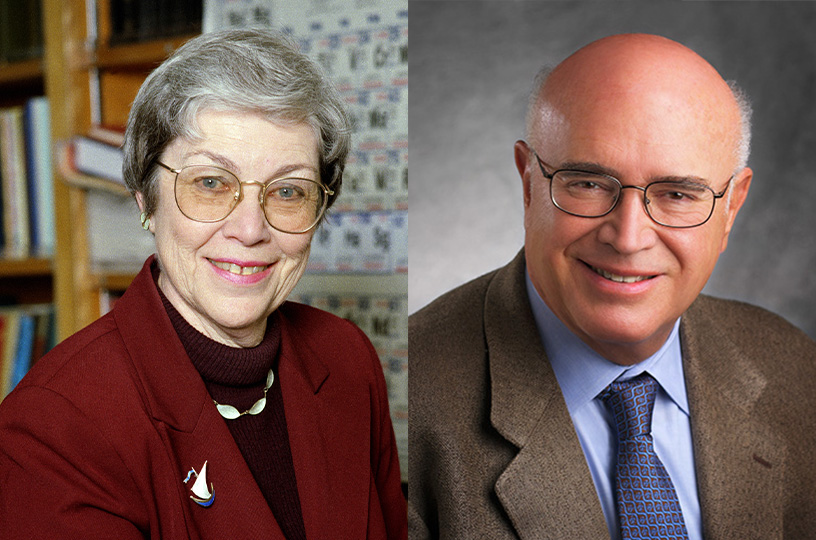Today, the Biden-Harris Administration announced Darleane Hoffman and Gabor Somorjai as recipients of the Enrico Fermi Presidential Award, one of the oldest and most prestigious science and technology honors bestowed by the U.S. government.
Hoffman, a pioneering nuclear chemist, joined the U.S. Department of Energy’s Lawrence Berkeley National Laboratory’s (Berkeley Lab) Nuclear Science Division in 1984 as a faculty senior scientist. She is also a Professor Emerita in UC Berkeley’s College of Chemistry.
Somorjai, a world authority on catalysis, is an affiliate in Berkeley Lab’s Materials Sciences Division, where for many years he was also a faculty senior scientist. He is also a University Professor in UC Berkeley’s College of Chemistry.
The Enrico Fermi Presidential Award was established in 1956 as a memorial to the legacy of Enrico Fermi, an Italian-born naturalized American citizen and 1938 Nobel Laureate in physics, who achieved the first nuclear chain reaction in 1942. It is given to encourage excellence in research in energy science and technology benefiting humanity; recognize scientists, engineers, and science policymakers who have given unstintingly over their careers to advance energy science and technology; and inspire people of all ages through the examples of Fermi, and the Fermi Award laureates who followed in his footsteps, to explore new scientific and technological horizons. The Fermi Award is administered on behalf of the White House by the U.S. Department of Energy.
“It is an honor to be able to recognize the outstanding achievements of Dr. Hoffman and Dr. Somorjai. Their commitment to pushing the boundaries of science is not only inspiring but will help us respond to the big challenges we anticipate in the future. We need leaders of this kind to provide the scientific foundation for the next generation,” said Secretary of Energy Jennifer Granholm.
“This award recognizes Darleane’s and Gabor’s remarkable achievements and lifelong commitment to discovery science and inspiring the next generation of researchers. They exemplify Berkeley Lab’s longstanding legacy of scientific excellence,” said Berkeley Lab Director Mike Witherell.
Darleane Hoffman, Enrico Fermi Presidential Award Laureate
Hoffman is a nuclear chemist known for the study of transuranic elements, quickly decaying elements that are heavier than uranium. In 1993, she was among a group of researchers who confirmed the existence of a new element, seaborgium 106, which was named for Nobel laureate Glenn Seaborg, a long-time colleague of Hoffman’s.
Hoffman is recognized with the Fermi Award for scientific discoveries advancing the field of nuclear and radiochemistry, for distinguished service to the Department of Energy’s missions in national security and nuclear waste management, and for sustained leadership in radiochemistry research and education.
Among her many honors, Hoffman was awarded the National Medal of Science in 1997; in 2000, she became the second woman to receive the Priestley Medal, the American Chemical Society’s highest honor; and in 2002 she was recognized by Discover magazine as one of the 50 most important women in science. More about Hoffman’s career and impact can be found here and in this 2014 article in which she reflects on changes in women’s status in her 70 years in chemistry. Hoffman started her chemistry career at Oak Ridge National Laboratory in 1952, and then worked at Los Alamos National Laboratory from 1953 to 1984. She also co-founded the Seaborg Institute for Transactinium Science at Lawrence Livermore National Laboratory in 1991. Hoffman was born in Terril, Iowa in 1926 and received a Ph.D. in chemistry from Iowa State College in 1951.
Gabor Somorjai, Enrico Fermi Presidential Award Laureate
Somorjai is a chemist whose research has advanced surface chemistry important for energy and clean water, in addition to a range of other contributions. He has been a leader in catalysis for more than five decades.
Somorjai is recognized with the Fermi Award for key contributions in molecular studies of surfaces through the use of single crystals, the development of techniques for quantitative determinations of surface structure, and establishing the molecular foundations of heterogeneous metal catalysis.
Among his many honors, Somorjai received the Wolf Foundation Prize in chemistry in 1998, the National Medal of Science in 2001, and the Priestley Medal in 2008. Somorjai has educated more than 130 Ph.D. students and 250 postdoctoral fellows. He is the author of more than 1200 scientific papers in the fields of surface chemistry, heterogeneous catalysis, and solid state chemistry, and has written four textbooks. He joined UC Berkeley as an assistant professor and Berkeley Lab as a faculty scientist in 1964. Somorjai was born in Budapest, Hungary in 1935 and received a Ph.D. in chemistry from UC Berkeley in 1960.
Winners of the Enrico Fermi Award receive a citation signed by the President and the Secretary of Energy, a gold-plated medal bearing the likeness of Enrico Fermi, and an honorarium of $100,000. In the event the Award is given to more than one individual in the same year, the recipients share the honorarium equally.
Other Berkeley Lab scientists who have received the Enrico Fermi Award include Charles Shank (2014), Andrew Sessler (2013), Arthur Rosenfeld (2005), Luis Alvarez (1987), John Lawrence (1983), Glenn Seaborg (1959), and Ernest Lawrence (1957).
# # #
Founded in 1931 on the belief that the biggest scientific challenges are best addressed by teams, Lawrence Berkeley National Laboratory and its scientists have been recognized with 16 Nobel Prizes. Today, Berkeley Lab researchers develop sustainable energy and environmental solutions, create useful new materials, advance the frontiers of computing, and probe the mysteries of life, matter, and the universe. Scientists from around the world rely on the Lab’s facilities for their own discovery science. Berkeley Lab is a multiprogram national laboratory, managed by the University of California for the U.S. Department of Energy’s Office of Science.
DOE’s Office of Science is the single largest supporter of basic research in the physical sciences in the United States, and is working to address some of the most pressing challenges of our time. For more information, please visit energy.gov/science.



